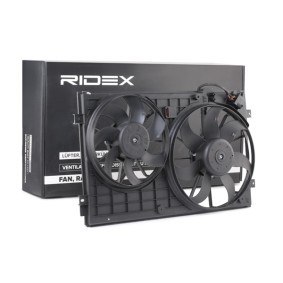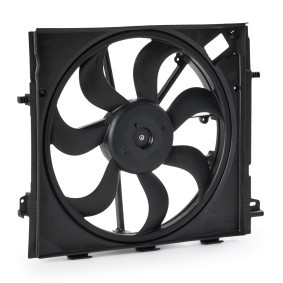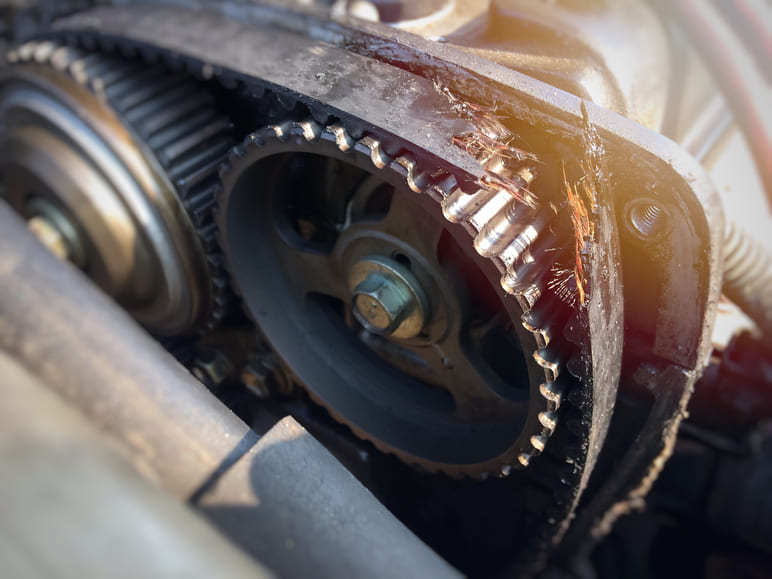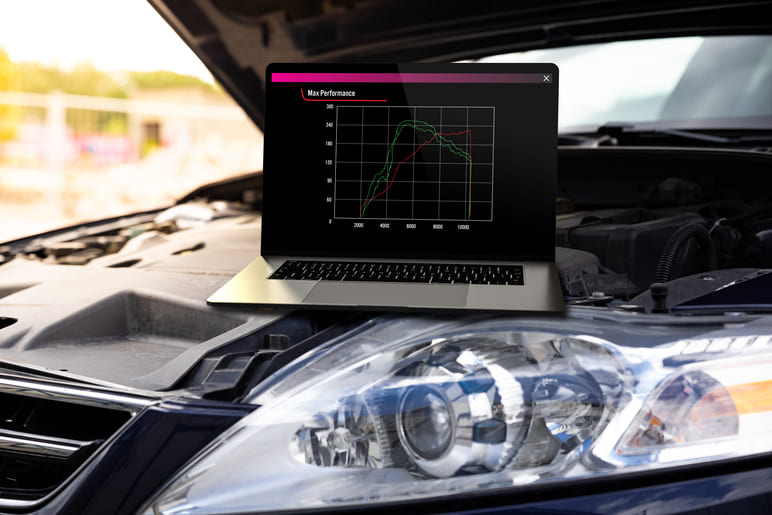
How to check a mechanical cooling fan
- Inspect the cooling fan drive belt.
Replace the belt if you detect any traces of grease on the belt surface.
If you notice signs of the drive belt splitting or wearing out, replace it. - Check the fan drive belt tension and the condition of the tensioner pulley.
- Check the cooling fan bearing.
Switch off the engine and rotate the fan with your hand. It should move evenly.
Replace the bearing if the fan doesn’t rotate easily or you notice runout. Some bearings need to be replaced as an assembly.
Tighten the belt if there’s any play.
Replace the tensioner pulley if it’s faulty. - Check the viscous fan clutch.
Rotate the fan blades with the engine switched off and check the axial play. There shouldn’t be any resistance, inertia, or play.
If you notice these signs of viscous fan clutch malfunction, remove the part. Heat the clutch up by placing it in boiling-hot water for at least 10 minutes. Carefully take the heated part out and try to make a few turns.
If there is no increased resistance during rotation, add silicone oil to the viscous fan clutch. If the viscous fan clutch is maintenance-free (i.e. cannot be refilled with silicone oil), replace it.

How to check an electric cooling fan
Attention! Always detach the negative terminal of the battery before you start diagnosing the electric fan.
- Check whether the fuse has blown. If it has, replace it.
- Inspect the relay.
Replace it if you notice any soot or oxidation on it. - Check that the relay is working properly.
Check the diagram of relays and fuses. Find the cooling fan relay and its nominal resistance value.
Connect the multimeter to the cooling fan relay and check the actual resistance value.
If the actual resistance value does not match the nominal value, replace the relay. - Check the cooling fan wiring.
Replace the wiring if it’s damaged. - Check the coolant temperature sensor.
To do this, start the engine, let the coolant warm up to 80–95°C and check whether the fan has switched on.
If the fan doesn’t switch on, replace the coolant temperature sensor. - Check the connectors.
If the connectors are oxidised, treat them with electrical contact spray. - Switch the fan on to check the operation of the electrical drive.
Disconnect the terminals from the temperature sensor and start the engine – the fan should work.


















Comment